You’re an Italian living in Sweden, tell us about yourself?
I left Rome to do medical research in Sweden, but not only. I was also in search of a more peaceful and orderly place to live. Stockholm was, and still is, my dream town. I feel at home here.
How did you become interested in bread baking?
Bread has always been important for me and my family. I remember that it was a big issue when we did not have freshly baked rosette on the table. Coming to Sweden, the one thing I missed was Italian—Roman—bread. So I learned how to make it.
What is Bread & Companatico?
As soon as I started to bake bread, I also started to write about it. I was so fascinated by the ease of the process and by how incredibly satisfying it is to make bread, even when made without any professional training. I wanted to spread the news as much as possible. My first blog was called My Italian Smörgåsbord. A couple of years later it became Bread & Companatico.
Companatico means “whatever goes with bread,” a rather archaic Italian term for “food.” This gives an idea of how central bread used to be in Italian cuisine.
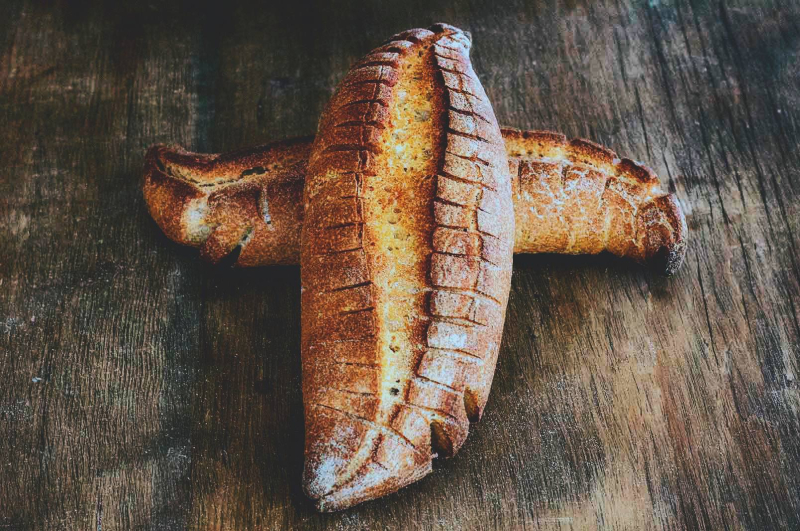
What bread did you grow up eating?
Well, I grew up in a central Roman district. On weekdays we used to get fresh rosette from the nearby bakery. Rosette are very special: they have plenty of empty space inside surrounded by soft, delectable, white bread encased in a light and crunchy crust. Us kids loved to do scarpetta with them — to use the bread to collect juices from food.
On weekends, or at least on weekends spent in the countryside, we loved to get a large loaf of fragrant country sourdough,that we sliced and filled with warm porchetta (sliced roasted pork). This type of sandwich is typical of the hills and lakes surrounding Rome that we call Castelli Romani. Nowadays, country loaves are brought to Rome daily, and one can find them even in supermarkets. Too bad they don’t ship to Sweden!
How’s Swedish bread, compared to artisan Italian?
French-style bread is becoming mainstream in Sweden, like everywhere else. So it is difficult to define Swedish bread, nowadays. When I moved to Stockholm 12 years ago, it was much harder to find a country style crusty loaf with an open crumb. Or a proper baguette. Now there are plenty of good international-style bakeries that do sourdough.
This bread is not much dissimilar from Italian bread, especially now that many Italian bakeries are also doing international-style sourdoughs. However, traditional Swedish bread is quite different. It is not crusty and has a regular crumb with small air pockets. It almost always contains sugar or syrup, which tastes a little odd to an Italian palate, at least in a “savory” bread. The most traditional of Swedish breads is not sweet at all, though, and crunchy all the way. I am referring to knäckebröd, a type of crackers generally made out of whole grains, in the past mostly rye and barley. That is lovely served with food.
To me though, Swedish bread excels in its sweetest versions, the many variants of kaffebröd, bread to be served with coffee. This type of bread is central to the Swedish coffee-break, here called “fika”. Fika is an important moment of relaxation and socialization. In fact, while meals are generally consumed fast in Sweden compared with Italy, coffee and coffee bread are savored slowly.
Holey bread; what’s the reason it’s popular?
Different people would give different answers to this question. It seems pretty reasonable to me to think that in recent times holey bread has become a symbol of the artisan bread renaissance. It is in fact very different from industrially produced bread, which is very soft and does not present the irregular, large, holes that can only be achieved in non-industrial bread baking facilities. Large holes and an uneven crumb are in fact suggestive of long fermentation and a delicate handling.
You had issues with digestion of wheat. Are you cured?
Yes and no. Yes, I had issues with wheat and no, I am not cured. But I am dealing with it and I have found some wheat varieties which do not give me the usual unpleasant reactions I suffer with regular wheat. Plus, I keep other factors, which I know can worsen my wheat intolerance, under control. My latest examinations showed that I have some alterations in common with celiac disease, but I don’t have the full pathology. You can find more in my review on gluten sensitivity in the latest issue of BREAD Magazine.
Are you a bread science person, or just love baking?
I am fascinated by the science behind some aspects of bread baking, particularly sourdough fermentation. However, I would not define myself as a “bread science person.” Someone who takes a scientific approach to bread baking. Possibly due to my medical scientist background and my intolerance issues, what interests me most is the science that can tell us how to make grains and bread healthier, rather than the one which can give us the perfect loaf.
Are you micro baking, or looking for a bigger project?
Good question. I am setting up a new concept store, Spigamadre. The website is coming soon at spigamadre.se. It’s focused on heirloom grains, in particular, heritage wheat varieties. If you are wondering about the name, I owe it to my then six-year old daughter, who has put in words what I am for her: a mother and a grains lover (spigamadre=mother ear of wheat). For years she has been offering me ears of wild grasses instead of flowers. How cute is that? With Spigamadre I want to help the health conscious who seek to prevent future sensitization, as well as people who are experiencing symptoms of wheat intolerance – though without celiac disease – to find alternatives to going gluten-free. Sustainability is certainly one reason why we should not lose this important food source, which is both nutrients-rich and environmentally friendly. Plus, wheat is our heritage, something we should not give up without solid reasons. Lastly, there is the foodie aspect of heirloom grains and one of my biggest wishes is to educate my nearby and far community to the distinctive flavors and aromas of different landraces grown in specific terroirs. We already do this for wine, cheese, coffee, chocolate and so on, why not for wheat and other cereals?
Favorite grain currently?
Difficult to choose!
I am interested to several varieties, since each confers to the resulting bread distinct baking properties, flavor and aroma. Different types of wheat can also be differentially tolerated by different people.
Sicilian heirloom hard wheat (Russello, Perciasacchi, Tumminia) has been an all-time favorite of mine, but lately I am experimenting with Senatore Cappelli, another heritage hard wheat grown in Southern Italy that is promising in terms of baking properties and digestibility. Khorasan is also a very interesting grain. Like emmer… and I truly cannot bake without my base strong heritage wheat, American Turkey Red, one of the varieties I personally tolerate best. Swedish Ölandsvete is also promising.
Ancient grain is good alone or with modern mix?
It depends. If your aim is to offer a more digestible bread, you may have higher chances to achieve that using the heritage/ancient varieties alone or combined with other heritage/ancient varieties. There surely are some modern varieties which are well tolerated, but on a regular flour package there is generally no indication on which modern variety we are buying. I would gladly use and promote highly tolerable modern varieties, if and when I will find some. However, if your aim is baking properties rather than health, then mixing is good, as it will more easily give you awe-inducing open crumb and “ears”.
How do you develop a recipe?
Again, it depends. I do use spreadsheets when I want to elaborate a recipe for a special bread that I know I may want to replicate (like panettone), and when the aim is a recipe to share. But when I am testing a new flour, as well as when I bake for myself and family, I just use my eyes and touch to figure out how much water I need to add and for how long I want to work and ferment the dough.
Are you considering a book?
I have been writing extensively about bread and related topics for the Italian bread bakers’ guild journal. And for BREAD Magazine. Plus for my blog. I have a couple of topics that are particularly dear to my heart and that I would like to see developed into monographies, but I do not know when this is going to happen.
What do you like to do when you’re not baking?
Hard to say. Do I have hobbies independent from my main interest? To serve as an example, for this summer’s vacation, my husband picked a lovely Greek island and I ended up filling my suitcase with local flour. There was an acorn meal production facility. How to prevent myself from learning everything I could about it? You see, I find it difficult not to feed my monomania with virtually everything that comes my way.
Who in the bread world inspires you?
First, all the professional bakers who keep doing their hard job day after day and keep loving it, always striving to further learn and improve their breads. Then, of course, I am with the artisan millers, who believe in high quality grains and flours and do an incredible job in supporting wheat growers and helping heirloom varieties to become known and accessible to many.
But most of all, I look up to the independent farmers. Those who take full control over their seeds and systems and bear the weight of their choices, including facing the losses due to an increasingly unpredictable weather. Without the heirloom wheat growers, no change will be possible. They truly are my heroes.
5 years from now, where do you want your business?
I hope that Spigamadre will have started to effectively help customers to access heirloom grains, bakers to expand their horizons, and heirloom grains growers to multiply. Am I wishing for too much?
Below is the recipe of the dark colored holey sourdough showed above, which Barbara graciously shared with us.
HERITAGE WHEAT SOURDOUGH WITH ACORN MEAL
300 g mature (but not overly so) sourdough wheat starter
700 g white strong (mine was 12.5% protein) heritage wheat
300 g sifted medium-strong (mine was 10.5% protein) stone-ground heritage wheat
30 g acorn meal
22 g sea salt
Water… as much as it takes it (as our grandmas use to say)
Combine the starter with the two flours and add 750 g water.
Knead for 3 minutes at low speed.
Let rest for ½ h.
Add 1/3 of the acorn meal and another 50 g water and mix more, at low speed.
Keep mixing and slowly add the rest of the acorn meal and more water, if it takes it.
Toward the end of the mixing, increase speed and add the salt.
Your dough should look shiny, well hydrated, and very elastic when stretched.
Transfer the dough in a large round bowl and do some stretch and fold in the bowl, to create tension.
Let rest for ½ hour and repeat the stretch and fold in the bowl.
Do the previous for another couple of times.
Do the bulk proof in the bowl (from start to finish) for 3 h, considering a room temperature around 22 C.
Shape with a delicate hand.
Final proof 2, maximum 3 hours at room temp.
Slash or don’t (I often don’t) and bake at high temperature (mine was 280 C) with steam for the first 15 minutes, then lower the temperature (to 230 C in my case) and release the steam.
You don’t need to wait too much for cutting into these light loaves (I make three small ones with this much dough).
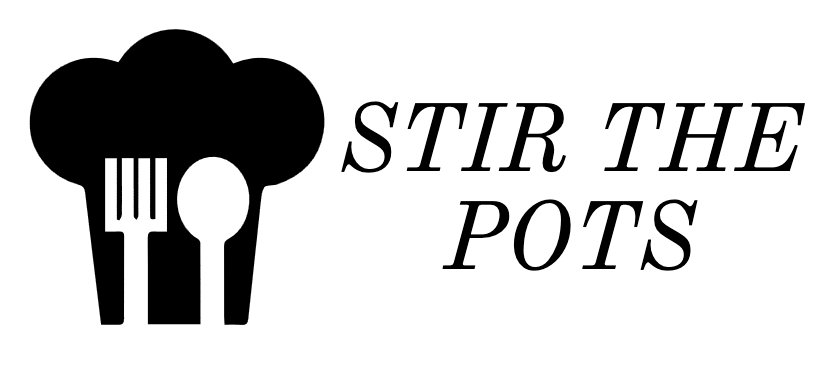
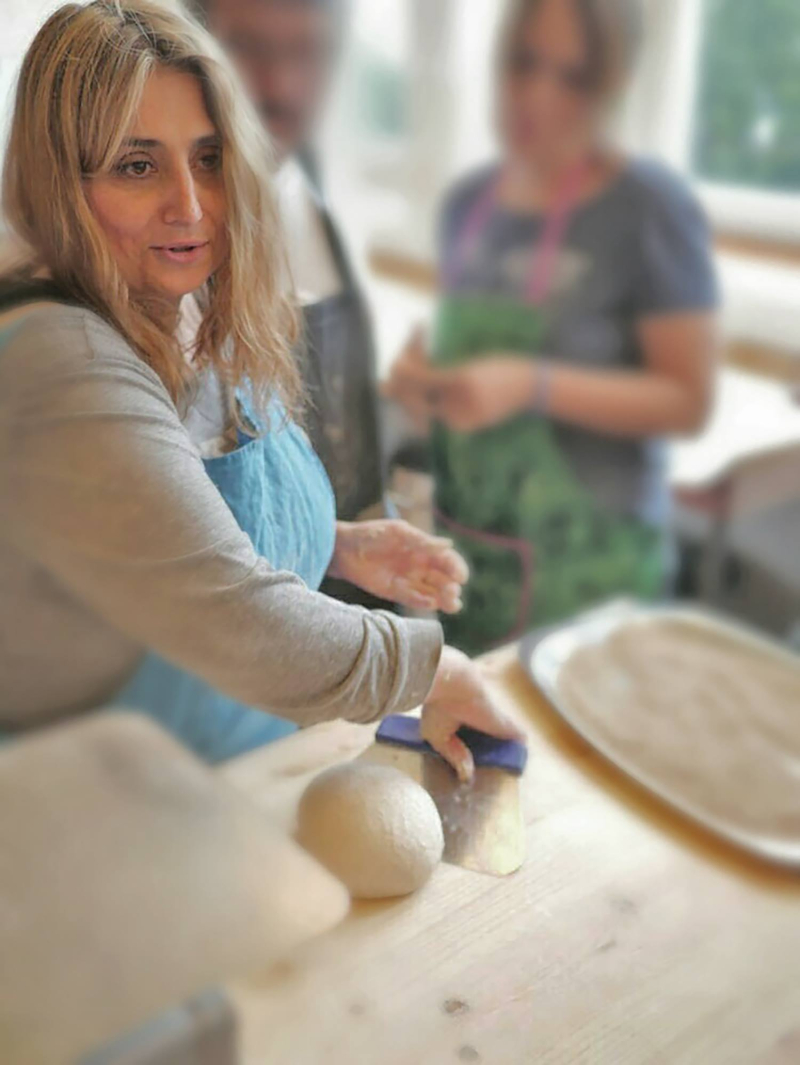
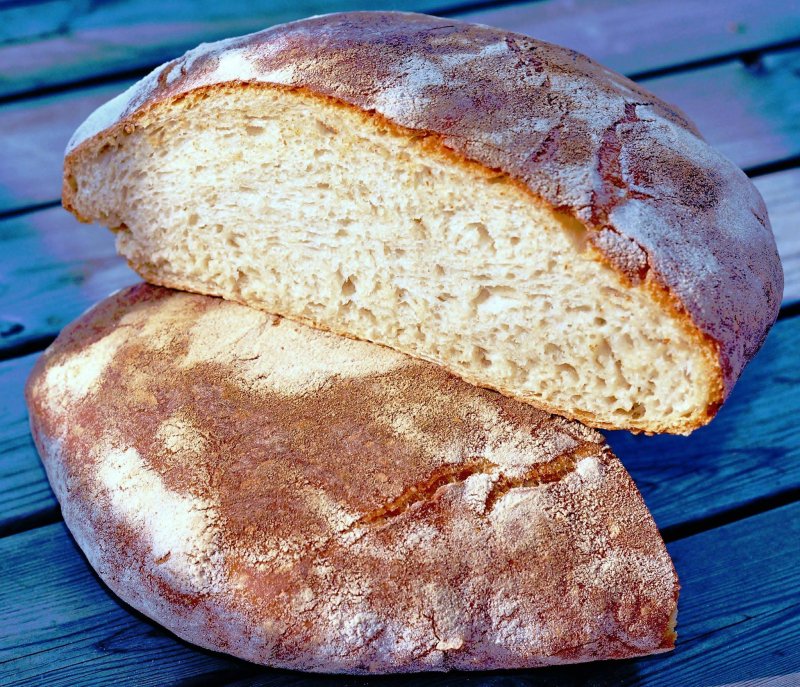
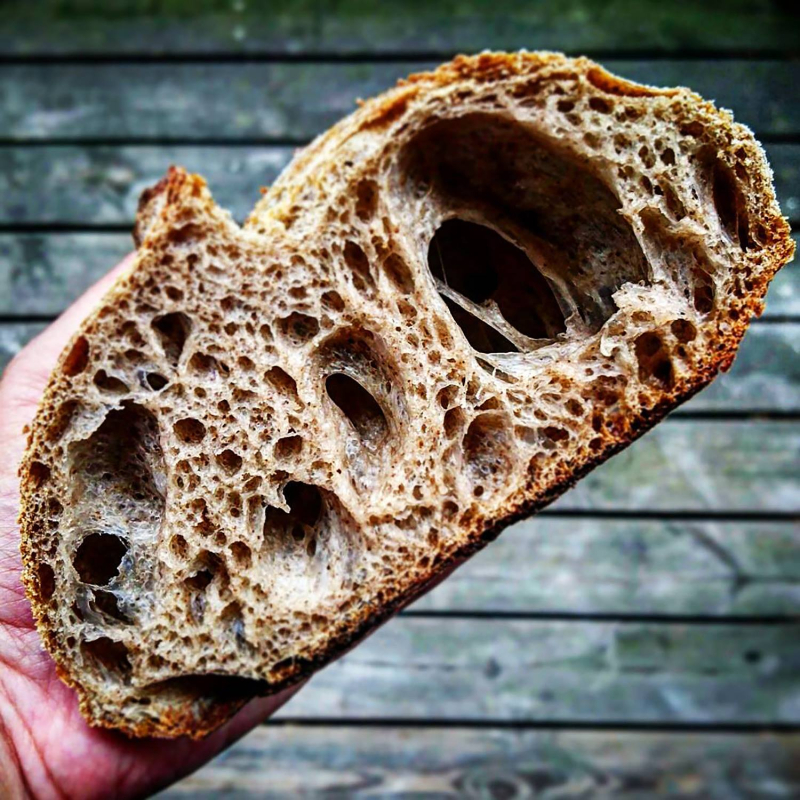
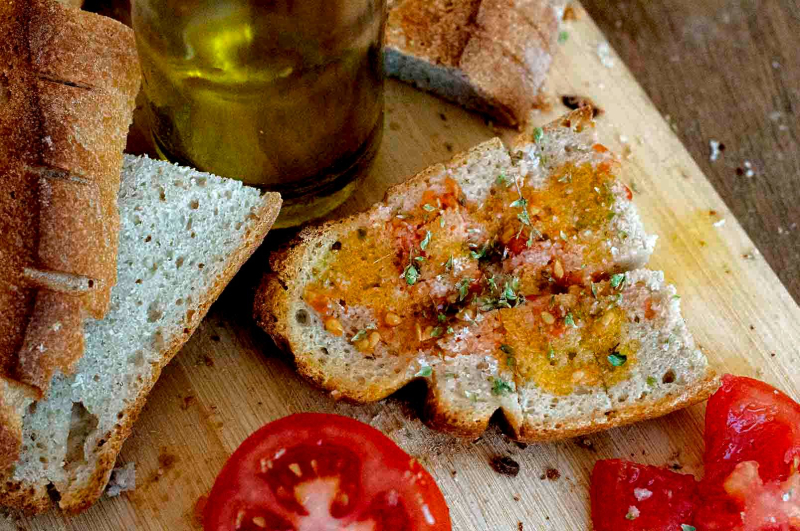
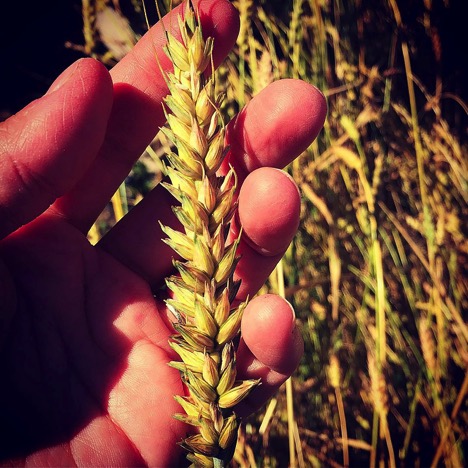
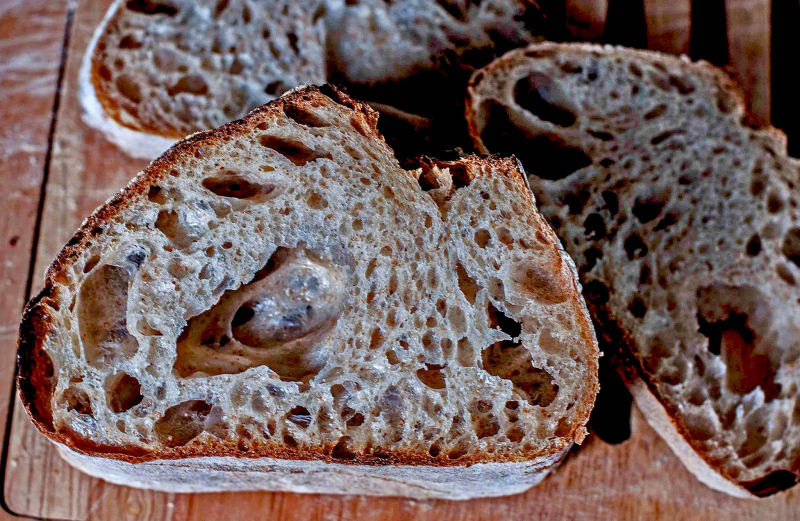
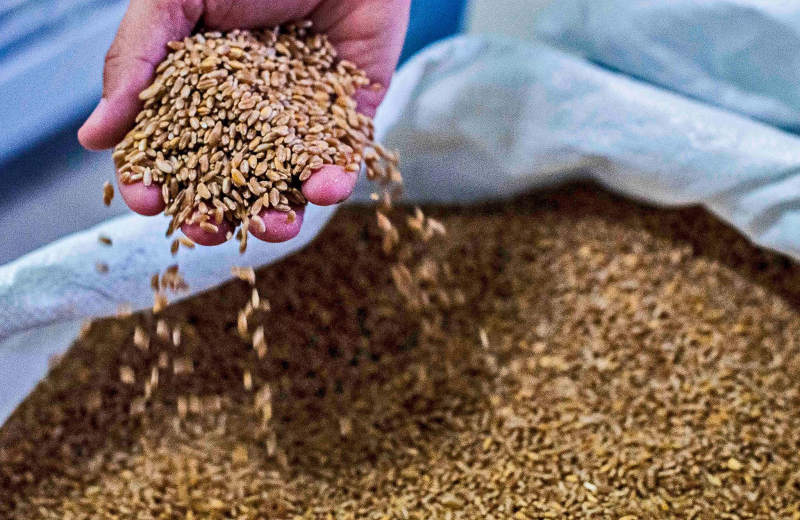
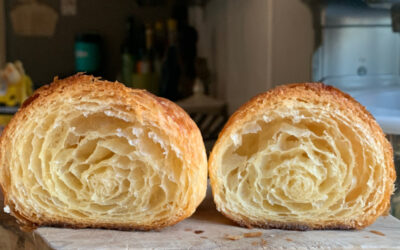

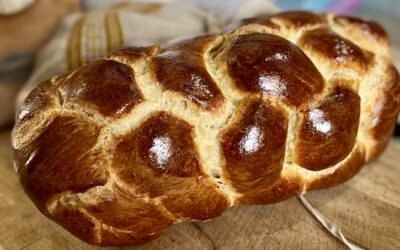
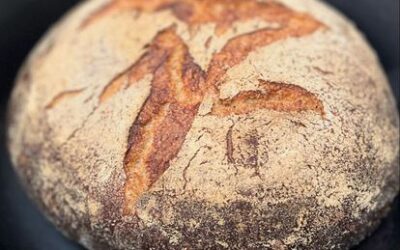
Hello:
I read the article about you, very interesting. Question: What is an Acorn meal?
mantana
Hi Barbara, very interesting as always!
Thanks, Jeremy, for posting these interesting interviews.
I know that ground acorns were used to stretch flour in past centuries, but isn’t it rather bitter?
At least pigs must like it, since they forage for acorns, if they are free-wheeling happy pigs.
Karin
Hi there Karin!
to “stretch flour”? not sure I understand.
Western people have never quite understood how to use acorns, how to make them edible. We owe our contemporary acorn meal facilities (very few indeed) to the knowledge passed on to us by Californian native Americans. the trick is to carefully soak the acorns.
thanks you Ale!!
Hi, thank you for reading.
Acorn meal is grounder acorns (oak tree acorns) that have been carefully soaked before being milled.
That’s a very interesting interview, Barbara. You share your love for bread beautifully. Best wishes 🙂
Loved this piece. More power to you Barbara.